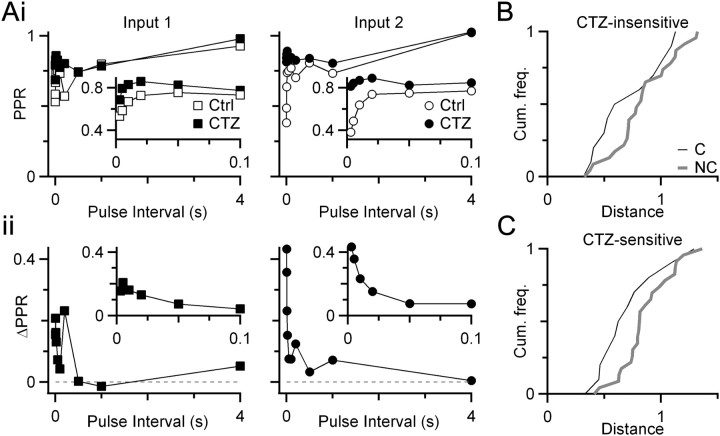Figure 3.
Effects of CTZ on similarity of converging endbulbs. Ai, Representative experiment of two converging inputs (left and right) before and after treatment with 50 μm CTZ. Aii, Change in PPR (ΔPPR) resulting from CTZ for the two endbulbs. Insets show PPR and ΔPPR at short intervals. B, Cumulative histogram of plasticity distances for converging and nonconverging endbulbs in the presence of CTZ (solid symbols in Ai). The distance measure incorporates PPR as well as EPSC amplitudes from the initial seven pulses during 100, 200, and 333 Hz trains when desensitization is significant (Chanda and Xu-Friedman, 2010) (i.e., ). The difference in distributions is not significant (Kolmogorov–Smirnov test, p = 0.16; NC = 11 pairs, NNC = 24 pairs). C, Cumulative frequency plot of the CTZ-sensitive component of plasticity. Responses in CTZ were subtracted from control (as in Aii), and distances were computed between those differences (i.e., ). Converging endbulbs have significantly lower distances than nonconverging endbulbs (Kolmogorov–Smirnov test, p < 0.05; NC = 11 pairs, NNC = 24 pairs). Slices are from mice aged P16–P21.

